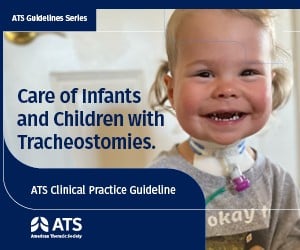UPDATE: The American Thoracic Society (ATS) has just announced groundbreaking clinical practice guidelines for managing tracheostomy care in children. Released on October 22, 2025, these guidelines aim to support parents and clinicians grappling with the complex decision of whether a tracheotomy is the best treatment option for young patients.
The emotional weight of this decision is immense for families. The newly published guidelines provide essential tools to help navigate these challenging choices, ultimately leading to better outcomes for children who require this life-saving procedure.
Dr. Christopher Baker, co-chair of the guidelines and director of the Ventilator Care Program at Children’s Hospital Colorado, emphasized the importance of this resource. “A tracheostomy can save a life, lengthen a life, and improve quality of life,” he stated. However, he cautioned, “In some cases, it may not help a patient or may even cause them to suffer more.” The guidelines are designed to empower both clinicians and family caregivers, fostering a collaborative approach to care.
Parents like Crystal Costante have expressed relief and hope following the announcement. Costante, a caregiver for a ventilator-dependent child with a tracheostomy, noted, “This guidance gives me a sense of hope as it shows healthcare providers are recognizing the importance of including families as true partners in care.” The emphasis on shared decision-making aims to build trust, improve communication, and enhance the quality of life for children undergoing this procedure.
The guidelines, developed by an expert panel including both health professionals and family representatives, focus on six critical questions related to tracheostomy care. The recommendations, based on rigorous evidence and the Grading of Recommendations, Assessment, Development and Evaluation (GRADE) framework, include:
1. **Applying Ethical Principles:** The panel recommends using ethical principles to guide shared decision-making regarding tracheostomy placement.
2. **Trained Caregiver Presence:** Always have an awake and alert trained caregiver present with children at risk of complications related to their tracheostomy.
3. **Comprehensive Airway Evaluation:** Conduct a complete airway evaluation before attempting decannulation, assessing various anatomical areas including the trachea and bronchi.
This marks the first time the ATS has published a clinical practice guideline specifically addressing pediatric tracheostomy care since a statement on chronic tracheostomy in 1999. The new guidelines reflect a significant advancement in the scientific and methodological approach to this critical area of pediatric healthcare.
Dr. Baker acknowledged the challenge of implementing these recommendations in resource-limited settings, stating, “We realize that some of our recommendations may be difficult to implement in areas with limited resources.” A follow-up study is planned to explore how these guidelines can be applied effectively in such environments.
The ATS continues to lead the way in pediatric healthcare, having issued over 30 clinical practice guidelines since 2016 on various conditions, including allergy, asthma, and pulmonary infections. As they develop implementation tools to assist clinicians, the focus remains on improving care and outcomes for children with tracheostomies.
These new guidelines are essential reading for pediatric pulmonologists, critical care clinicians, and rehabilitation specialists. As the healthcare community rallies around this urgent issue, families can expect to receive more informed, compassionate care for their children in need of tracheostomy support.
Stay tuned for more updates as this story develops.







